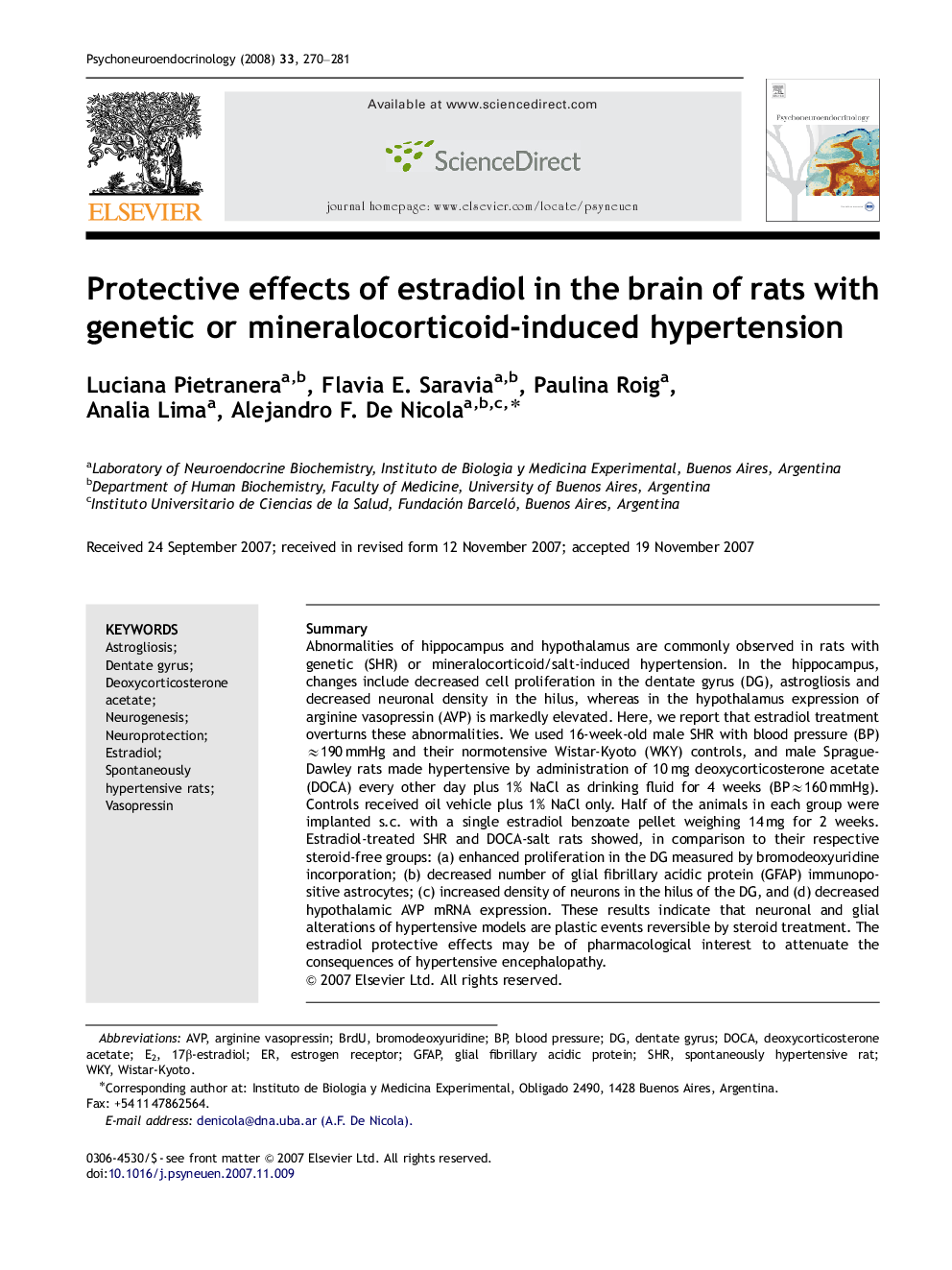| Article ID | Journal | Published Year | Pages | File Type |
|---|---|---|---|---|
| 336821 | Psychoneuroendocrinology | 2008 | 12 Pages |
SummaryAbnormalities of hippocampus and hypothalamus are commonly observed in rats with genetic (SHR) or mineralocorticoid/salt-induced hypertension. In the hippocampus, changes include decreased cell proliferation in the dentate gyrus (DG), astrogliosis and decreased neuronal density in the hilus, whereas in the hypothalamus expression of arginine vasopressin (AVP) is markedly elevated. Here, we report that estradiol treatment overturns these abnormalities. We used 16-week-old male SHR with blood pressure (BP) ≈190 mmHg and their normotensive Wistar-Kyoto (WKY) controls, and male Sprague-Dawley rats made hypertensive by administration of 10 mg deoxycorticosterone acetate (DOCA) every other day plus 1% NaCl as drinking fluid for 4 weeks (BP≈160 mmHg). Controls received oil vehicle plus 1% NaCl only. Half of the animals in each group were implanted s.c. with a single estradiol benzoate pellet weighing 14 mg for 2 weeks. Estradiol-treated SHR and DOCA-salt rats showed, in comparison to their respective steroid-free groups: (a) enhanced proliferation in the DG measured by bromodeoxyuridine incorporation; (b) decreased number of glial fibrillary acidic protein (GFAP) immunopositive astrocytes; (c) increased density of neurons in the hilus of the DG, and (d) decreased hypothalamic AVP mRNA expression. These results indicate that neuronal and glial alterations of hypertensive models are plastic events reversible by steroid treatment. The estradiol protective effects may be of pharmacological interest to attenuate the consequences of hypertensive encephalopathy.
